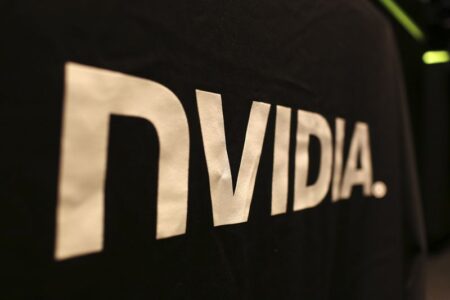The Glimpse Group, specializing in spatial computing and AI-driven software solutions, has released its Fiscal Year 2024 financial results.
Despite experiencing a revenue decline of 35% due to strategic changes and a dip in corporate spending, the company has secured significant contracts and anticipates a revenue increase in FY25.
With a focus on long-term growth through Annual Recurring Revenue and strategic partnerships, Glimpse Group is actively exploring options to enhance shareholder value and address Nasdaq compliance concerns.
Key Takeaways
- The Glimpse Group’s FY24 revenue fell to $8.8 million, a 35% decrease from the previous fiscal year.
- Notable contracts, including a $4 million deal with the Department of Defense, are expected to boost FY25 revenues.
- The company predicts Q1 FY25 revenues will significantly surpass Q4 FY24 figures.
- Gross margins are projected to be sustained between 60-70%.
- Cash and cash equivalents stood at $1.85 million as of June 30, 2024.
- The stock is considered undervalued, with strategies being explored to improve shareholder value.
- Glimpse has until March 3, 2025, to resolve a Nasdaq minimum bid price requirement issue.
Company Outlook
- Anticipated revenue growth in FY25 fueled by government contracts.
- Commitment to maintaining stable gross margins.
- Focus on enhancing market position through strategic partnerships and opportunities in defense sectors.
Bearish Highlights
- Substantial revenue drop in FY24 due to strategic realignment and reduced corporate expenditure.
- Urgency to address Nasdaq compliance for minimum bid price requirements.
Bullish Highlights
- Secured contracts with government and defense agencies signaling potential for future revenue increases.
- Partnerships with NVIDIA (NASDAQ:), Microsoft (NASDAQ:), and AT&T provide a competitive edge.
- Long-term focus on building Annual Recurring Revenue (ARR) streams.
Misses
- FY24 revenues fell short compared to FY23, reflecting a 35% decrease.
Q&A Highlights
- Lyron Bentovim emphasized the significance of the CRADA partnership and its potential for multimillion-dollar opportunities.
- The company’s strategy includes proving the value of their solutions to facilitate future ARR opportunities.
- Relationships with major tech entities are non-exclusive but contain unique competitive elements.
In summary, The Glimpse Group (ticker not provided) is navigating through a period of strategic transition with a keen eye on future growth and market opportunities, particularly in the defense sector.
While facing challenges such as a significant revenue drop and compliance issues with Nasdaq, the company remains optimistic about its long-term strategy centered around ARR and strategic partnerships.
InvestingPro Insights
The Glimpse Group’s (VRAR) financial results and strategic positioning are further illuminated by recent data from InvestingPro. Despite the company’s optimistic outlook for FY25, current metrics paint a challenging picture. InvestingPro data shows that VRAR’s revenue for the last twelve months as of Q3 2024 was $9.99 million, with a concerning revenue growth of -23.64% over the same period. This aligns with the company’s reported 35% revenue decline in FY24.
An InvestingPro Tip highlights that VRAR is “quickly burning through cash,” which is particularly relevant given the company’s reported cash and cash equivalents of $1.85 million as of June 30, 2024. This cash burn rate could potentially impact the company’s ability to execute its growth strategies without additional financing.
Another InvestingPro Tip notes that the “stock price movements are quite volatile,” which is consistent with the company’s current Nasdaq compliance issues and the need to address the minimum bid price requirement. The stock’s price has fallen significantly over the last year, with a one-year price total return of -58.92% as of the latest data.
On a positive note, VRAR holds more cash than debt on its balance sheet, which could provide some financial flexibility as it navigates its current challenges and pursues growth opportunities.
For investors seeking a more comprehensive analysis, InvestingPro offers 12 additional tips for VRAR, providing a deeper understanding of the company’s financial health and market position.
Full transcript – Glimpse Group Inc (VRAR) Q4 2024:
Operator: Welcome to The Glimpse Group Fiscal Year 2024 Financial Results Webinar. Webinar. At this time, all participants are in a listen-only mode. A question-and-answer session will follow the formal presentation. As a reminder, this conference is being recorded. The earnings release that accompanies this call is available on the Investors section of the company’s website at Before we begin the formal presentation, I’d like to remind everyone that statements made on today’s call and webcast, including those regarding future financial results and industry prospects, are forward-looking and may be subject to a number of risks and uncertainties that could cause actual results to differ materially from those described in the call. Please refer to the company’s regulatory filings for a list of associated risks, and we would also refer you to the company’s website for more supporting industry information. I would now like to hand the call over to Lyron Bentovim, President and CEO of The Glimpse Group. Lyron, the floor is yours.
Lyron Bentovim: Thank you, everyone, for joining us. I am pleased to welcome you to The Glimpse Group’s fiscal year 2024 financial results investor call for year ended June 30, 2024. During this fiscal year, we made significant strides in our strategic transition to focus on providing enterprise-scale spatial computing, cloud and AI-driven immersive recurring software solutions, or Spatial Core as we will refer to it internally, led by our subsidiary company, Brightline Interactive. In August 2024, Brightline’s General Manager, Tyler Gates, gave a detailed webinar on Spatial Core. If you are interested in the topic, I strongly recommend that you listen to the webinar, the link for which can be found on our IR website. Some examples of Spatial Core traction include: Signed a $4-plus million 12-month contract with a Department of Defense entity for a spatial computing ecosystem, integrating AI workflows and accelerated compute for a variety of defense use cases. We entered into a Cooperative Research and Development Agreement, CRADA, with the US Army Combat Capabilities Development Command, Control, Communications, Computers, Cyber, Intelligence, Surveillance and Reconnaissance Center to develop, assess and improve workflows to create and augment synthetic imagery for use in training and assessing AI and machine learning algorithms. Extended partnership with a Fortune 500 government systems integrator for VR training in digital twin environments to a key US government agency with over [44,000] (ph) employees on a mid-six figure contract. Brightline, Cesium and NVIDIA teamed up at the GEOspatial INTelligence Symposium 2024 to introduce Brightline’s Spatial Core which uses AI workflows for complex computation on top of real life data sets, enabling powerful real time, massive data driven, digital twin and simulation applications. We successfully completed the Cooperative Research and Development Agreement, CRADA, with the US Naval Surface Warfare Center, Dahlgren Division for the adaptation of immersive technologies. We completed a contract to support a major immersive technology hardware provider to accelerate their computing interfaces into GPU-enabled cloud, with streaming and visualization capabilities. We are at an advanced process of securing several additional multimillion dollar Spatial Core contracts with multiple government, DoD and large enterprise customers. The short-term aggregate value for these contracts is in the $5 million to $10 million range. While there is no guarantee that some or all of these will come to fruition, we anticipate that, subject to government annual budgeting timing, a good portion of these will be signed before year-end 2024, with additional potential contract signings in calendar year 2025. Each of these potential contracts has significant growth elements built into them that could lead to significant annual recurring software revenue once the original contract has been successfully performed. While Spatial Core is our strategic focus and growth engine, our other Glimpse entities, QReal, Sector 5 Digital, Foretell Reality and Glimpse Learning, continue to generate meaningful enterprise revenues and positive momentum. Some recent examples include: Glimpse Learning entered into a two-year mid-six figure contract with the College of Staten Island CUNY Technology Incubator for the design, deployment and integration of a suite of immersive technologies in its new innovation hub. This is a cross Glimpse project with a significant software license component. Foretell Reality entered into a six-figure partnership with a large university to develop an AI-driven VR training system, enabling students and trainees to learn various professional skills through conversation-centric simulations with an AI-based avatar in different immersive settings. In recent months, QReal has seen an increase in its revenues with Snap for AR 3D models and lenses. Sector 5 Digital entered into a six-figure engagement with one of the world’s architecture firms to visualize in AR the new business campus of a multinational retail company. Looking forward, we expect overall revenues to be significantly higher in the coming months and quarters, based on signed contracts and our advanced revenue pipeline. We also expect to be cash flow positive and increase our cash balance between now and year-end 2024 and beyond without the need for capital raise. These developments, significant traction and our positioning at the intersection of spatial computing, AI and cloud are not currently reflected in our public company valuation, which has come under significant and consistent pressure. As a result of that, on September 3, 2024, the company received a letter from Nasdaq notifying the company that it no longer met the minimum bid price requirement for continued listing of $1. We have until March 3, 2025 to cure this deficiency and, if not cured by then, the company can apply for an additional 180-day extension to cure to approximately September of 2025. In order to regain compliance with Nasdaq, the company may consider various potential measures to resolve the deficiency, such as leveraging its unutilized share buyback pool inside of buying and press releases announcing significant business developments when if those materialize. Such measures, if any are taken, may help cure the deficiency in due time. The company is not considering a reverse stock split at this time, a position that may change in the future. In light of Spatial Core’s AI- and cloud-driven revenues with large DoD entities, our strong pipeline of revenues and our expectation is to generate positive cash flows going forward, we believe that there is a sharp disconnect between our intrinsic value and our current public company valuation. As such, the Board of Directors of the company is exploring strategic options to maximize shareholder value. With that, I will now turn it over to Maydan Rothblum, Glimpse’s CFO and COO, to review the financial results. Maydan?
Maydan Rothblum: Thanks, Lyron. I will limit my portion to a summary review of our financial results. A full breakdown is available in our 10-K and press release that were filed after market close today. Please note that I’ll refer to adjusted EBITDA and other non-GAAP measures. For the calculation of adjusted EBITDA and other [non-cash] (ph) measures, please refer to the MD&A section of our 10-K filing, which you can find on our website under SEC filings. Fiscal year ’24 revenue of approximately $8.8 million, a 35% decrease compared to fiscal year ’23 revenue of approximately $13.5 million. Revenue for Q4 fiscal year ’24, that’s the quarter ending June ’24, was approximately $1.7 million, a 41% decrease compared to Q4 fiscal ’23 revenue of approximately $2.9 million. The decrease in revenue was primarily driven by: one, our strategic shift to Spatial Core, which led to a turnover in our legacy customer base, which was more immersive marketing oriented; two, a consolidation and divestiture of some of our entities; and three, a general slowdown in corporate disposable spending in general and in the immersive industry in particular. Looking forward, we expect: one, revenue for Q1 fiscal year ’25, that’s the quarter ending September ’24, to be significantly higher than fiscal year — than Q4 fiscal year ’24; and two, revenue for Q2 fiscal year ’25, that’s the quarter ending December ’24, and revenue for Q3 fiscal year ’25, that’s the quarter ending March ’25, will each exceed $3 million per quarter. Gross margin for fiscal year ’24 was approximately 67% compared to 68% for fiscal year ’23. We expect our gross margins to continue to remain in the 60% to 70% range. Adjusted EBITDA loss for fiscal year ’24 was approximately $4.6 million compared to an EBITDA loss of approximately $6.4 million in fiscal year ’23. Our current cash operating expense base, pre revenue, is approximately $1 million per month. Given our projected revenue for Q2 fiscal year ’25 and Q3 fiscal year ’25, we expect to generate positive cash flow in each of those two quarters based on existing contracts only and our current operating cash expense base. As of June 30, 2024, the company had cash and cash equivalents of approximately $1.85 million and an additional $0.7 million in accounts receivable. We do not intend to raise capital in the foreseeable future, especially since we expect our operations to generate positive cash and add to our cash balance between now year-end ’24. The company has no outstanding corporate debt or preferred equity obligations. I’d now like to pass it back to Lyron for some closing remarks, after which we will begin our question-and-answer session. Lyron?
Lyron Bentovim: Thank you, Maydan. We have executed on the strategic transition plan we outlined in previous quarters and expect increased revenue and cash profitability in the coming quarters. We continue to make strong strides in our Spatial Core business, however, in our view, our stock is extremely undervalued, and as such, we are in the process of exploring all potential options to unlock its value. I thank you all for your interest in and support of The Glimpse Group. And now, I’ll turn the call back over to the operator to take some questions.
Operator: Thank you, Lyron. [Operator Instructions] Our first question comes from Casey Ryan with Westpark. Please proceed.
Casey Ryan: Lyron, Maydan, good afternoon. It’s very good transition quarter.
Lyron Bentovim: Good afternoon, Casey.
Casey Ryan: Yeah, thank you. And I think the outlook is fantastic on the revenue front. I want to ask a few questions about spatial computing. I think in terms of pursuing DoD opportunities, I think typically you guys are partnering with some other firms. And I’m just curious if there’s one partner that you’re leaning on in particular or if you’re working with multiple partners to secure different branches and different opportunities and different types of engagements?
Lyron Bentovim: So, the answer to that is we’re working with multiple partners. We actually work directly with the variety of the end customers. And then, based on the needs, we bring the partners in to work with us.
Casey Ryan: Oh, I see. And typically, is the agency, whether it be Army, Navy, Air Force, or maybe some other government entity, do they have preferences for partners for you to bring in, or do you guys have a lot of latitude with that, I guess, in terms of recommending things?
Lyron Bentovim: Many times it goes with their preferences.
Casey Ryan: Okay.
Lyron Bentovim: Those are usually partners they’ve had history working with, but sometimes we come with the partner, sometimes they introduce us to the partner, which obviously opens up a lot of other opportunities that we are pursuing.
Casey Ryan: Well, yeah. So, that was really where I was going with the question was, does getting these sort of new relationships, I guess, with these contracting partners expand the like top end of your funnel essentially for spatial computing?
Lyron Bentovim: Absolutely.
Casey Ryan: Okay. All right. Terrific. And then, one question on the OpEx. I think I sort of missed it. Maydan was explaining it clearly, but I think I was distracted. So, the OpEx was roughly $2.8 million, $2.9 million for this quarter is what it looks like. Are you suggesting that that run rate is going to be similar or kind of even potentially lower per quarter moving forward?
Lyron Bentovim: Maydan, do you want to take that?
Maydan Rothblum: Yeah. Our cash expense operating base is around $3 million a year.
Casey Ryan: Okay.
Maydan Rothblum: Sorry, not for the year, $3 million per quarter.
Casey Ryan: Per quarter, right.
Maydan Rothblum: We have — again, there’s — to a large degree, those are variable expenses that we have good control over, but given the growth in the business that we’ve been experiencing and expect to experience going forward, I think that $3 million base of cash operating expenses per quarter is a good assumption.
Casey Ryan: Okay. Terrific. And then the last question, you’re talking about strategic maybe alternatives and trying to unlock the value, and shares, I would certainly agree with you that the shares are not where they should be, but tell me about — have you had any divestitures that may be meaningful in the future in terms of getting equity interest in things that you’ve divested, or tell me what’s been happening with divestitures of sort of non-core pieces of your business?
Lyron Bentovim: Yeah. So, we’ve divested some of our businesses and, obviously, hold both kind of equity position as well as other vehicles in those positions that might — in good scenarios, if those companies are successful kind of both raising capital on their own and growing, will become meaningful. For now, we’re taking the conservative approach of, basically, valuing those as nothing on our balance sheet.
Casey Ryan: Okay.
Lyron Bentovim: But it does have a potential down the road. If those companies are successful, we will be well rewarded.
Casey Ryan: Yeah. Well, and that was going to be my question is sort of where do we see that on the balance sheet. But you’re saying that — right now, you guys are saying, hey, look, these are kind of lottery tickets, but the problem…
Lyron Bentovim: We try to be conservative where we can within the guidance of public accounting. So, we basically kind of rather have them kind of basically kind of they are on the public, kind of if you read the filings, you will see that kind of some of those divestitures, but kind of we hold them at zero value on the balance sheet.
Casey Ryan: Okay. And maybe for everyone’s education, how many of those sort of opportunities are there? Like, have you done three or four? Are there 10? I’m just sort of curious about the number of opportunities without any insight into scale or necessarily where they are…
Lyron Bentovim: We have two that are out there right now and potentially kind of might have a couple of more down the road.
Casey Ryan: Okay. Terrific. Well, look, I think the outlook is terrific. And obviously, getting to a cash flow positive position here before the end of the year is really encouraging. So, good job, and I’ll jump off and let others ask questions. Thank you.
Lyron Bentovim: Thank you, Casey.
Operator: The next question comes from [Darryl Zaint] (ph), Private Investor. Darryl, please proceed.
Unidentified Analyst: Well, you almost got my name right. Hello, Lyron. Hello, Maydan. My — oh, congratulations on the recent CRADA announcement. I was wondering if you could provide any details on how significant revenue-generating opportunity this could be?
Lyron Bentovim: So, first of all, for those of you that don’t know, CRADAs are basically relationship between a arm of the US government and a private entity kind of working together usually to explore some potential. So, the CRADA itself does not have any financial elements in it, but a successful execution on the CRADA needs to kind of — obviously, there’s three kind of positives in the CRADA. One, obviously, successful execution of this CRADA could lead to very significant, and I’m talking kind of multimillion dollar opportunities that will open up from that. So that is obviously kind of the big excitement, that’s the answer, Darryl, to your question. The second thing kind of that is critical is the fact that this pretty well-established entity chose us to do the CRADA with, which is very significant both in terms of assuring us that we’re on the right place, but also kind of serves as a kind of a sign for others of kind of our positioning in the marketplace. And the third is those CRADAs in addition to opening up those opportunities, which we talked about that are pretty significant, also open up other opportunities as we get to work closely with the people in the DoD. And past CRADAs have proven that kind of not only kind of successful execution opens up pretty significant opportunities, which we’re working on, but also leads to additional opportunities as well.
Unidentified Analyst: Great. With that in mind, I’d like to get a little bit of an elaboration on our relationship with NVIDIA, Microsoft and AT&T. Obviously, in the last presentation, you showed their relationship with regard to the Spatial Core product, but I want to know, is it exclusive to Glimpse Group? Are there any other companies approaching them with similar offerings? Or do we basically have a technological moat regarding Spatial Core?
Lyron Bentovim: So, even though our relationship is not exclusive in terms of kind of we’ve not signed an exclusive contract with them, there is multiple, in a sense, exclusive elements in terms of the uniqueness of what we’re doing and how we are partnering with them, creates this kind of relationship that allows us to drive forward. And the more success we have together, the more that moat becomes bigger and less swimmable against. We are in a very competitive space that is fast evolving, and we need to stay on top of our game and constantly push forward. But right now, we’re positioned very well in these partnerships, but kind of the more success we have together, the more success we will have in the future as well.
Unidentified Analyst: Great. Thanks for your response. And I don’t have any further questions at this time, so I’ll bail out and let someone else get some questions. Thank you.
Lyron Bentovim: Thank you, Darryl.
Operator: At this time, we’ll turn to some writing questions. [Operator Instructions] Our first online question is, do you believe that you need to do a land grab and maximize short-term revenues, or is there a prospect for smoother ARR opportunity within this space?
Lyron Bentovim: Very good question. So, the focus is on a long-term ARR. That’s kind of the holy grail. That’s what we’re working towards. The way to get there is to position yourself in as many of these opportunities, prove the value of our solutions and our ability to integrate them within a very specific customer setting and then create from that will come those ARR opportunities.
Operator: Okay. It looks like we have no further questions. I’d like to turn the call back over to Lyron for any emailed questions.
Lyron Bentovim: Yeah. Darryl asked these questions, so we will not have any email questions. So, I’ll take this time to thank each and every one of you for joining our earnings conference call. We look forward to continuing to update you on an ongoing basis on our progress and growth. If we were unable to answer any of your questions, please feel free to reach out to us directly.
Operator: This does conclude today’s webinar. Thank you for your participation and have a wonderful day.
This article was generated with the support of AI and reviewed by an editor. For more information see our T&C.
Read the full article here















